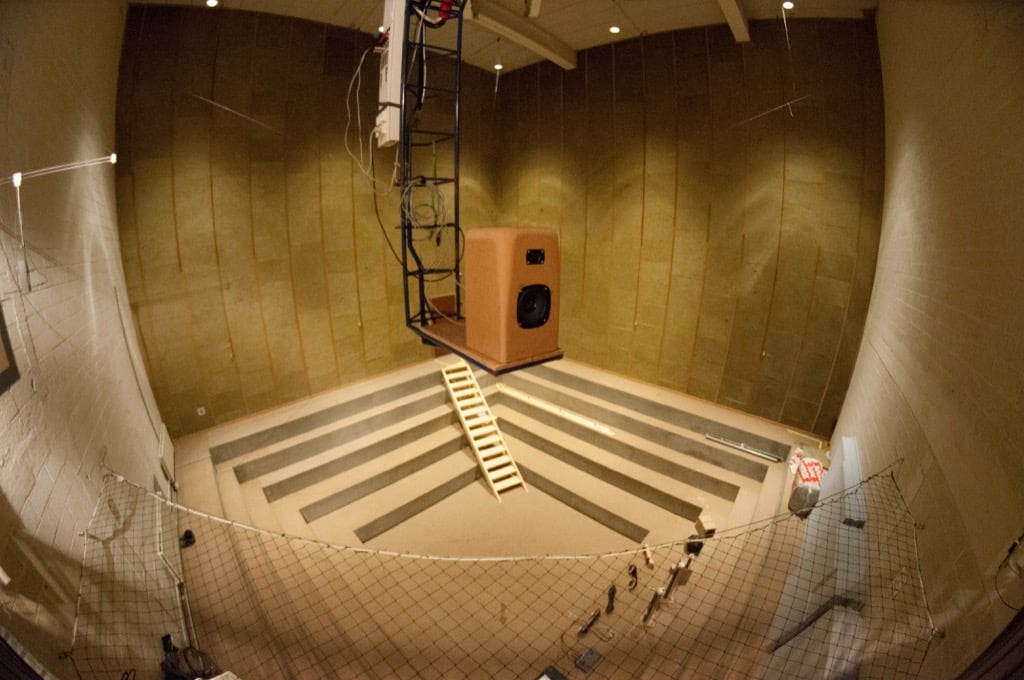
Once produced, the prototype is subjected to a number of extensive tests. These tests enable the company to see whether the loudspeakers’ performance matches the conceptual idea and if not, which modifications are required before the speaker is ready for production.
In pursuit of perfection, Bang & Olufsen uses its highly sophisticated research facility: in a purpose-built cube-shaped test chamber (12 x 12 x 13 metres) are analysed the speakers’ performance under simulated free-field conditions. The test equipment and computers that are used are capable of registering even the most microscopic deviations from the ideal that has been chosen and every detail of the large number of factors affecting the sound quality of the speaker is able to be measured.
The Cube was designed and built in 1981 and is completely isolated from its surroundings. The large dimensions allow reliable measurements to be taken all the way down to 30 Hz at 1m, or 40 Hz at 3m. This is much lower than in conventional anechoic rooms, but Bang & Olufsen considers it necessary as measurements at low frequencies give a better correlation between objective and subjective assessments. The Cube is not, however, an anechoic room, but has been designed to produce a natural sounding semi-reverberant environment such as would be found in a normal home.
The loudspeakers under test can be placed to within a millimetre, tilted, or rotated to any required angle by computer control. This is a powerful tool for identifying cone break-up modes, cabinet resonances, poor suspension and diffraction effects.
The purpose of a loudspeaker cabinet is to isolate the rear side acoustical emission of the speaker units from the front side emission. A loudspeaker cabinet is also designed to act as a supporting structure for the speaker units without contributing any sound itself. As it is important to minimize mechanical vibrations in the cabinet Bang & Olufsen uses a highly sophisticated technique called laser holography: by studying the three-dimensional picture produced during the holographic test, it can be seen where in the cabinet undesirable vibrations are produced and we then the steps needed to dampen them can be taken.
The above-mentioned testing techniques can all be classified as ‘objective tests’ because the performance of the loudspeaker is evaluated on the basis of data provided by advanced technological equipment. However, as loudspeakers are developed for the pleasure of the human ear – and not merely for the impersonal acceptance of a machine – a number of ‘subjective’ listening tests are also undertaken. In the reference room for listening tests are gathered an audience of people from the well-trained listening panel whose ears are tuned to the fine nuances and details of sound. Their expert opinion and highly personal comments are of the utmost value in research and development work and their acceptance is needed before the speaker can be given the final seal of approval.